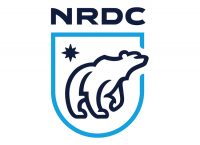Primary Functions
- Provides datasets related to the effects of climate change on water resources in the United States.
Detailed Description
The U.S. Climate-Water Database provides access to datasets related to the effects of climate change on water resources in the United States. The goal of the U.S. Climate-Water Database is to provide background information to help communities, water utilities, resource managers, and food and energy producers prepare for a changing climate. Given a need to develop resilience strategies based on an uncertain future, many experts look to past climate extremes for information to help guide and constrain decision-making. Information resources that may be helpful to provide characterization of the past and insight into the future include:
National Water Information System
NWIS provides access to water-resources data collected at approximately 1.5 million sites in all 50 States, the District of Columbia, Puerto Rico, the Virgin Islands, Guam, American Samoa and the Commonwealth of the Northern Mariana Islands.The USGS investigates the occurrence, quantity, quality, distribution, and movement of surface and underground waters and disseminates the data to the public, State and local governments, public and private utilities, and other Federal agencies involved with managing our water resources.
National Weather Service Advanced Hydrologic Prediction Service
AHPS is a web-based suite of accurate and information-rich forecast products. They display the magnitude and uncertainty of occurrence of floods or droughts, from hours to days and months, in advance. These graphical products are useful information and planning tools for many economic and emergency managers. These new products will enable government agencies, private institutions, and individuals to make more informed decisions about risk based policies and actions to mitigate the dangers posed by floods and droughts.
National Ground-Water Monitoring Network
The NGWMN Data Portal provides access to groundwater data from multiple, dispersed databases in a web-based mapping application. The portal contains current and historical data including water levels, water quality, lithology, and well construction.
The Water Quality Portal (WQP) is a cooperative service sponsored by the United States Geological Survey (USGS), the Environmental Protection Agency (EPA), and the National Water Quality Monitoring Council (NWQMC). It serves data collected by over 400 state, federal, tribal, and local agencies.
National Climatic Data Center Climate Data Online
Climate Data Online (CDO) provides free access to NCDC’s archive of historical weather and climate data in addition to station history information. These data include quality controlled daily, monthly, seasonal, and yearly measurements of temperature, precipitation, wind, and degree days as well as radar data and 30-year Climate Normals.
USDA FS Climate Change Resource Center
The Climate Change Resource Center (CCRC) is a web-based, national resource that connects land managers and decisionmakers with useable science to address climate change in planning and application.
NASA Hydrology Data and Information Services Center
The Hydrology DISC supports data products generated by Goddard Earth Sciences Data and Information Services Center Hydrological Sciences Branch. These products support weather and climate forecast experiments, water resources applications, and water and energy cycle research.
Global Lake Temperature Collaboration
The Global Lake Temperature Collaboration database is a compilation of lake summer surface water temperatures from 235 lakes around the world over a 25-year period.
Groundwater depletion in the United States (1900?2008)
A natural consequence of groundwater withdrawals is the removal of water from subsurface storage, but the overall rates and magnitude of groundwater depletion in the United States are not well characterized. This study evaluates long-term cumulative depletion volumes in 40 separate aquifers or areas and one land use category in the United States, bringing together information from the literature and from new analyses. Depletion is directly calculated using calibrated groundwater models, analytical approaches, or volumetric budget analyses for multiple aquifer systems.







